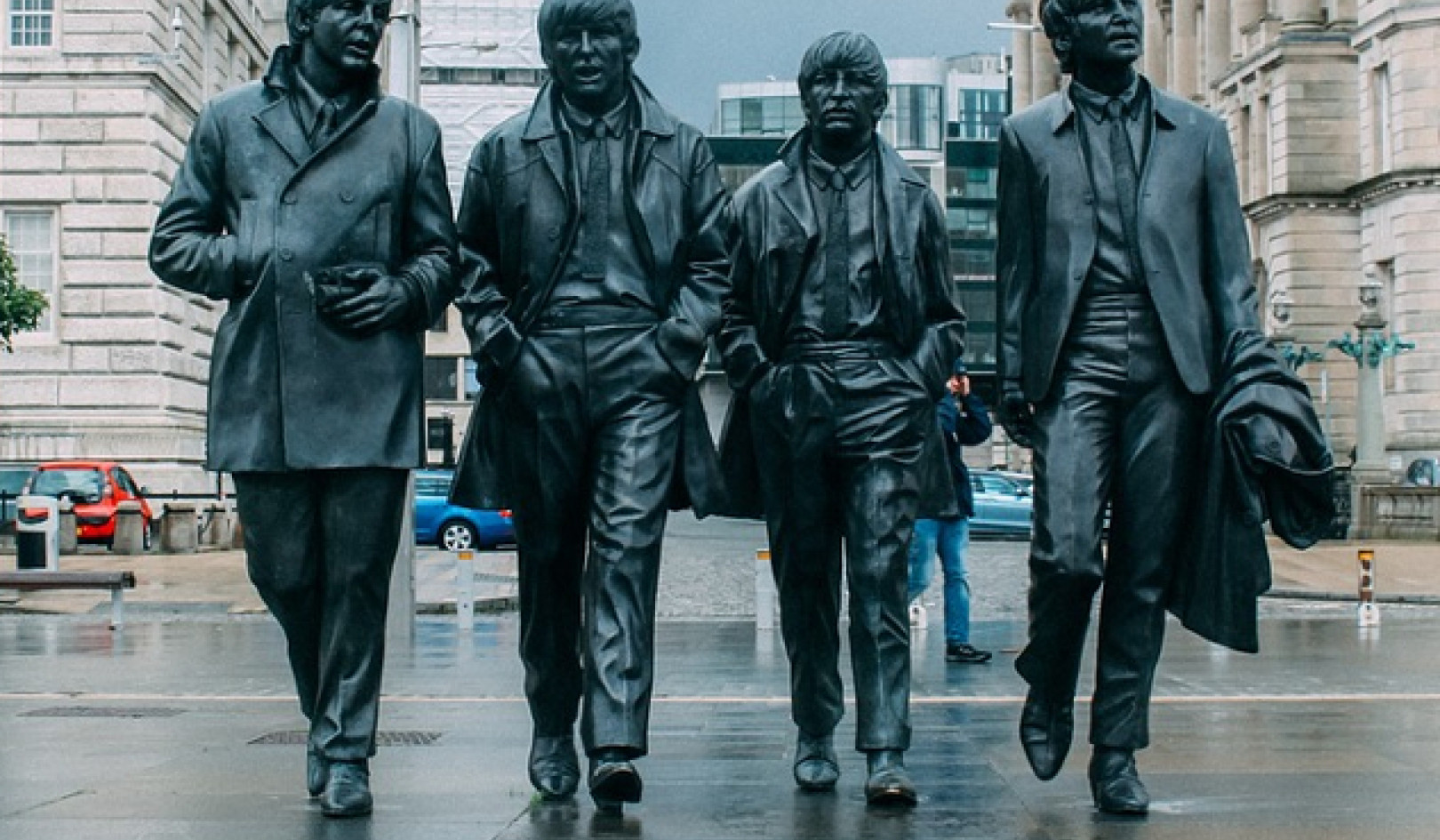
Image by Arek Socha
We are moving from a context of “Leading when I know” or when I should have known, where strategy means guessing the future, to a world of “Leading when I don’t know,” where strategizing means preparing ourselves for whatever future comes our way.
—Didier Marlier, Managing Partner at Enablers Network in Switzerland
from his November 28, 2014 blog post
In the mid-1960s, Bob Dylan’s song, “The Times They Are A-Changin,” became an anti-establishment anthem for frustrated young people. It carried a prophetic message that could have been both an ominous warning and a hopeful invitation. Looking back now from today’s context, his song feels somehow gentle and naïve. It was a simpler time.
Fifty-plus years later, the times are no longer “a-changin;” the times have changed—radically. Our world is anything but simple. In fact, rapid, continuous, unpredictable change is the “new normal.” Complexity has become the order of the day at every level of society, from family systems to global systems. It’s a VUCA* world—a world that feels increasingly edgy, unpredictable, chaotic, and, for some, unsafe. (*VUCA: volatile, uncertain, complex, and ambiguous)
Too often, we find ourselves not knowing how to move forward, whether at the societal level or the personal level. It has become painfully clear that the systems, approaches, guidelines, formulas, and conventional wisdom that we have relied on for so long are no longer working. In fact, the more we try to “fix” things or to “get things under control” again, the more “out of control” things become.
Complicated or Complex?
In frustration, many people ask: Why isn’t this working? What is the world coming to? How can we just make everything OK again?
Yet as the conscious leadership movement spreads, more people are starting to ask: How do we respond to all that is happening? What needs to shift in how we think about and approach leadership and service?
While there are no simple or definitive answers, our Three Questions can be a powerful way to begin. And there is also another simple, yet not-so-obvious question that can at least steer us towards an effective approach: Is this situation complicated or is it complex?
The words complicated and complex are often used interchangeably in everyday conversation. However, they actually describe two different kinds of realities that require two very different kinds of approaches—two very different skill sets. Understanding the difference and recognizing whether a situation is complicated or complex is critical as we navigate today’s uncertain and rapidly changing world.
When A Situation Is Complicated...
When a circumstance or situation is complicated, it is possible to “think” our way through it—to analyze it and figure it out. Complicated issues are like a tangled knot or ball of string. It might take some knowledge and expertise to figure them out, as well as a lot of patience if there are multiple layers of “knotted string.” Yet with some time and energy, we can resolve them. With the proper knowledge and experience, it is possible to identify all of the pieces or components, figure out how they relate to each other, and how to work with them.
Think of the wiring in your house. While you may not be able to figure out the issue on your own, an experienced electrician can usually track down the problem and solve it. Or perhaps there is a problem in a software program you are using. There might be layers of complication in this kind of issue, yet a software expert can usually find the root of the problem and resolve it.
In complicated situations, there is usually an identifiable linear, cause-and-effect sequence of events, choices, or actions that led to what is happening now. The environment around the issue is usually fairly stable and somewhat predictable, and there is often general agreement among the people involved about what the desired outcome is. Complicated situations can usually be resolved through a solution-focused approach.
In complicated situations, it is not unreasonable to expect leaders to have answers to our questions. We hope that they are able to clearly define the problems at hand and know how to solve them, or at least know whom to ask for help. Hopefully, those leaders have risen to their positions because of their experience, knowledge, and expertise in their fields. Therefore, within this context, we might expect our leaders to develop clear visions for the future and to design clear strategies for making things happen.
When A Situation Is Complex...
However, when a situation or circumstance is complex, much of the above no longer applies. There are likely to be many moving pieces, and those pieces may be constantly changing, evolving, or morphing into other forms. Conditions are constantly shifting, and there may be many different ideas and opinions about what the outcomes should be.
Often, many things are happening at once. We might sense that some of these things are related to one another, yet the connections between them are not obvious. Very little is predictable, and there is no clear cause-and-effect sequence. The ground beneath our feet keeps shifting and movement patterns tend to be circular or erratic instead of linear. The whole environment can feel unstable.
In complex situations, our past knowledge and experience is often no longer relevant. The ways that things worked before is not necessarily how they will work again. Therefore, making a plan is challenging, if not impossible. Everything keeps moving and changing.
Usually, the best you can do when working in complexity is to look for your next step, take that step, and then observe what happens as a result. What you learn or discover through that observation then informs your next step. After you take that step, you pause to sense what is next. And you continue repeating this cycle as long as necessary.
Complex situations need leaders with great capacity for Whole-Mind Thinking and Whole-Being Awareness. They need leaders who are skilled at navigating uncertainty, volatility, and rapid change—leaders who understand how the world works as energy in motion.
Therefore, when working in complexity, our expectations from leaders must be different than when we are working in complicated situations. Expecting leaders to have all the answers, to clearly define what is happening, and to know what to do is not realistic. That’s not how complexity works.
Characteristics of Complicated and Comple
Systems and Situations
|
Complicated |
Complex |
|
There is a predictable, cause-and-effect sequence. |
Very little is predictable—there is no obvious cause-and-effect sequence. |
|
Movement patterns are linear. |
Movement patterns are circular and erratic—rarely linear. |
|
You can identify all of the pieces or components and figure out how to work with them and how they relate to each other. |
There are many moving pieces that are constantly changing. Many things are happening at once, yet the connections between them are often not obvious. |
|
You can “think” your way through it—you can analyze it and figure it out. |
You must be able to “read the signals.” The situation demands Whole-Mind Thinking and Whole-Being Awareness. |
|
You can make a plan and more or less follow the plan to success. |
Making a plan is challenging, if not impossible, because all of the pieces keep moving and changing. Therefore, you can only look for your next step, act, and then stand aside to observe the new or different patterns that emerge, and then take another step. The cycle then continues to repeat until it is no longer needed. |
|
Past knowledge and experience is valuable and serves you well. |
Past knowledge and experience are often no longer relevant—how it worked before will not necessarily work again. |
|
The environment tends to be stable. |
The environment tends to be less predictable and sometimes unstable. |
|
There is general agreement about the desired outcome. |
There are often many different opinions or desires about what the outcome should be. |
|
You are working toward a specific outcome or creating a specific result. It’s a solution-focused approach. |
The outcome or result will be revealed over time. It’s helpful to have a sense of direction, yet that will not always be clear, especially at first. However, commitment or attachment to a specific outcome or result rarely serves in a complex situation. |
|
The “complicated” label tends to apply primarily to mechanical or technical issues or systems, or to tasks that will be served by logical, linear approaches, and where you can reasonably expect predictable outcomes. |
The “complex” label tends to apply to situations that involve people’s feelings, values, and emotions; personal or professional relationships; or organizational or societal systems. |
Navigating Complicated and/or Complex Situations
In navigating complicated situations, it’s helpful to be analytical and systematic. However, in complex situations, we need to be intuitive, creative, imaginative, innovative, and flexible. We need to be able to respond quickly to what is happening in the moment. Instead of having all of the answers, we learn to be comfortable in the “not knowing.” It’s important to give ourselves, as well as others, permission to try something new, fully knowing that it may or may not work.
Exploration and experimentation should be encouraged and supported. Rather than viewing outcomes from a perspective of success or failure, it’s more helpful to look at them from the perspective of, “What are we learning; what do we choose to carry forward; and what do we choose to leave behind?”
Navigating complexity requires being able to see beneath the surface—to perceive beyond the obvious—and dance with both the big picture and the details at the same time. It involves sensing when to pause, giving things time to come together or fall into place, and when to move ahead in decisive action. The system or the circumstance itself becomes our guide and teacher, even as it changes and evolves.
From a quantum physics perspective, the complicated world operates primarily in the “particle” state of fixed forms. The complex world, on the other hand, operates much more in the “wave” state—a state of constantly moving energy where anything is possible. The more we understand life, relationships, societal systems, and organizational structures as energy in motion, the clearer we become about how to navigate a complex world.
Intellectual Mind and Intuitive Mind
In the last chapter, we talked about the intellectual and intuitive minds and how they have different, yet very complementary, strengths. We talked about the importance of their partnership, and at the same time, the importance of the intuitive mind leading the way.
This is particularly true when working in complexity. Complex situations are often confusing and overwhelming to the intellect. The intellect longs for order—for all of the pieces to fit together into a linear, organized, consistent structure. It wants to be able to control and predict what is going to happen. However, in a complex system, linear sequence and predictable patterns are the exception, not the rule. The intellectual mind alone cannot grasp the many moving pieces and shifting patterns of complexity.
The larger intuitive mind, on the other hand, has a much greater capacity for handling complexity. It is designed to explore and discover, to observe what is happening, to look for and recognize emerging patterns, to sense the hidden messages, and to “connect the dots” between what might appear on the surface to be unrelated circumstances and events. The intuitive mind can then sense how to respond and discern what the next step might be.
Finding Simplicity Within Complexity
In an unexpected sort of way, there is actually simplicity within complexity. Approaching complexity with complexity will not get us very far. However, approaching complexity with simple, direct, and powerful questions can often cut through to the essence and begin to open up some space within the complexity so that we can begin to see our way through it. This is because simple yet powerful questions can take us directly to the greater awareness of the intuitive mind.
This intuitive approach to complex situations can feel counter-intellectual. It’s a completely different approach than many of us are used to. Yet if we give it a chance, some bigger part of us—our intuitive selves—comes alive. To the intuitive mind and heart intelligence, this approach feels quite natural. We expand way beyond our intellectual expertise into Whole-Mind Thinking and Whole-Being Awareness. We become experts at perceiving energy and information, receiving guidance, sensing next steps, and moving into action.
©2017 by Alan Seale. All Rights Reserved.
Reprinted with permission of the author and
The Center for Transformational Presence.
Article Source
Transformational Presence: How To Make a Difference In a Rapidly Changing World
by Alan Seale. Transformational Presence is an essential guide for: Visionaries who want to move beyond their vision into action; Leaders who are navigating the unknown and pioneering new territory; Individuals and Organizations committed to living into their greatest potential; Coaches, Mentors, and Educators supporting the greatest potential in others; Public servants committed to making a difference; and Anyone who wants to help create a world that works. New World, New Rules, New Approaches.
Transformational Presence is an essential guide for: Visionaries who want to move beyond their vision into action; Leaders who are navigating the unknown and pioneering new territory; Individuals and Organizations committed to living into their greatest potential; Coaches, Mentors, and Educators supporting the greatest potential in others; Public servants committed to making a difference; and Anyone who wants to help create a world that works. New World, New Rules, New Approaches.
Click here for more info and/or to order this book on Amazon. Also available in Kindle format.
About the Author
 Alan Seale is an award-winning author, inspirational speaker, transformation catalyst, and founder and director of the Center for Transformational Presence. He is the creator of the Transformational Presence Leadership and Coach Training program which now has graduates from more than 35 countries. His books include Intuitive Living, Soul Mission * Life Vision, The Manifestation Wheel, The Power of Your Presence, Create a World That Works, and most recently, his two-book set, Transformational Presence: How To Make a Difference In a Rapidly Changing World. His books are currently published in English, Dutch, French, Russian, Norwegian, Romanian, and soon in Polish. Alan currently serves clients from six continents and maintains a full teaching and lecture schedule throughout the Americas and Europe. Visit his website at http://www.transformationalpresence.org/
Alan Seale is an award-winning author, inspirational speaker, transformation catalyst, and founder and director of the Center for Transformational Presence. He is the creator of the Transformational Presence Leadership and Coach Training program which now has graduates from more than 35 countries. His books include Intuitive Living, Soul Mission * Life Vision, The Manifestation Wheel, The Power of Your Presence, Create a World That Works, and most recently, his two-book set, Transformational Presence: How To Make a Difference In a Rapidly Changing World. His books are currently published in English, Dutch, French, Russian, Norwegian, Romanian, and soon in Polish. Alan currently serves clients from six continents and maintains a full teaching and lecture schedule throughout the Americas and Europe. Visit his website at http://www.transformationalpresence.org/




























